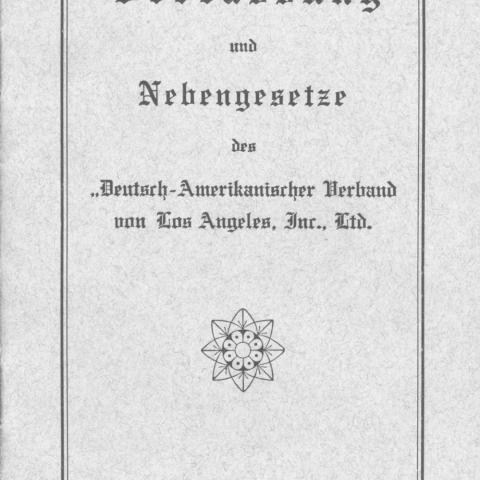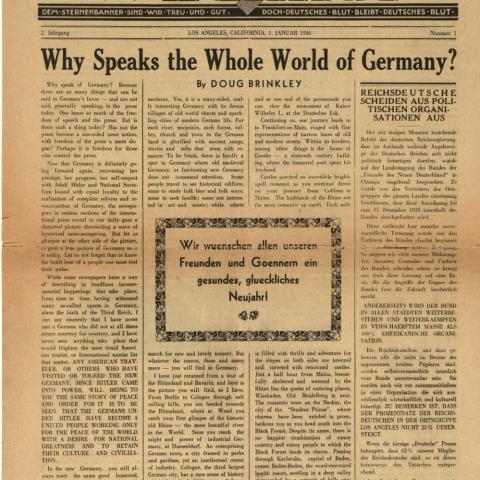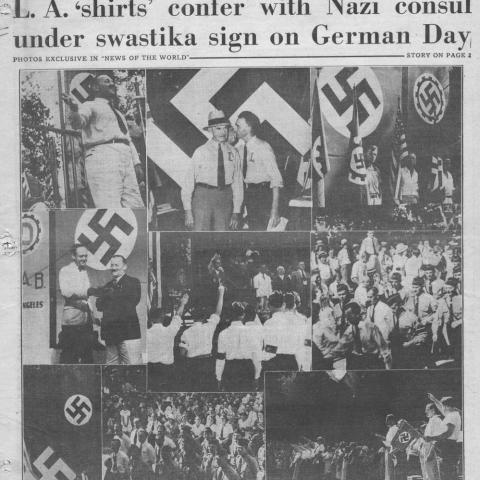German American Bund
Origins
The Bund began as the Friends of New Germany in Chicago in 1933. This group traced its roots to the Teutonia Society and National Socialist Party, both active in the United States during the 1920s. The success of the Third Reich fueled the organization's rapid growth.
In 1936, the Friends regrouped as the German American Bund, an organization espousing to be "100% American." They professed to be for "constitution, flag and a white gentile ruled, truly free America." The Bund had two goals: to establish an effective power base by "Nazifying" the German American community and to sway American public opinion in favor of the New Germany.
The Bund divided the country into three geographic districts, or "Gaus," with Los Angeles as the headquarters of the Western Gau. From the Deutsches Haus near downtown Los Angeles, Gauleiter Hermann Schwinn supervised the district's activities.
Locally and nationally, the Bund maintained close ties with Hitler's Germany. Schwinn and other Bundists visited German steamships docked in Los Angeles Harbor to exchange reports on their activities for packages or orders and propaganda materials. Though vehemently denied by all, unofficial ties existed between Bund officials and German consulate staff.
Activities
At the height of the Bund's power, national membership estimates varied from an exaggerated 50,000 to the FBI's count of 6,600. In Los Angeles, Bundists probably numbered no more than 500 active meetings, rallies and parties at Deutsches Haus and Hindenburg Park in La Crescenta. The Bund's highly publicized activities attracted the curious as well as the sympathetic.
The Bund held grand celebrations at the Deutsches Haus to commemorate the successes of Hitler and the Third Reich, such as the "liberation" of Sudetenland and the "Anschluss" of Austria.
At Hindenburg Park, the Bund held dances and "patriotic" assemblies. They often featured speakers from other native fascists groups including The Silver Legion and Militant Christian patriots. Bundists believed meetings with other fascists were an effective way to reach a greater American audience.
During summers in the 1930s, several recreation areas nationwide including Hindenburg Park served as the district site for Camp Sutter, a youth camp of the national Jugendschaft movement. The Jugenschaft or "Community of Youngsters" modeled itself after the Hitler Youth in Germany. Children were indoctrinated with the customs, ideals and traditions of Germany under the Third Reich.


































